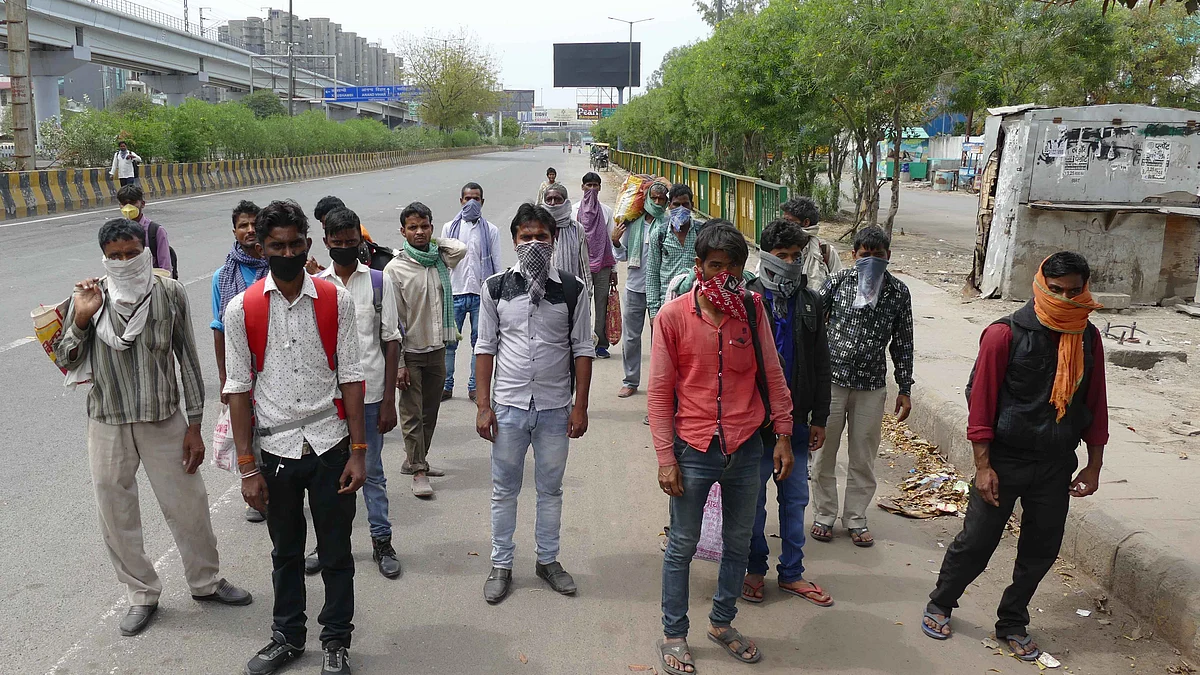Challenge before India: Saving both lives and livelihoods
Strategic lockdown may be more effective than total lockdown in a country like India where a large population of poor, many of them daily wagers, can’t survive a longer period of lockdown

As India has extended its national lockdown till May 3, the country now faces another challenge: saving livelihoods, in addition to saving lives. The cases of novel coronavirus in the country keep increasing with more than 14,000 reported cases and deaths of more than 490 people.
First of all, let's be clear that the extension of the lockdown is a very necessary step. In fact, many state governments too were pushing for an extension and even had requested the Centre to do so. Notably, even before Prime Minister Narendra Modi's morning address to the nation on April 14, many chief ministers — like Captain Amrinder Singh of Punjab, Naveen Pattanaik of Odisha, Uddhav Thackeray of Maharashtra — had already increased the lockdown in their own states.
There is no vaccine yet to suppress this virus, which has already taken more than 1.5 lakh lives across the world. The target for now is to contain the further spread of the virus till the invention of a vaccine. And one of the crucial ways to do so is — social distancing. However, there have been many cases across the country where cautionary requests to maintain social distancing were not followed. Not to forget that people from the worst affected countries of Europe like Italy didn't practice social distancing seriously. Everyone knows the bitter outcome of this carelessness.
Take the example of Sweden. The Scandinavian country till now has been tackling Coronavirus quite differently. Life has been normal in the country with schools and restaurants remaining open. The Swedish government instead has been refusing to implement strict measures but relying on the responsibility of people.
On the other hand, the other Scandinavian countries like Finland, Denmark and Norway imposed strict measures. In fact, Denmark was one of the earliest European countries to go for a lockdown, even before death of any in its own land.
The differences can be easily recognized. While Sweden has more than 1400 deaths, Denmark, Norway and Finland have 336, 161 and 82 deaths respectively. This is because these countries, unlike Sweden, chose for strict measures. That's the reason, the government of India has to implement the lockdown — as there is no other option, as of now, to control the spread of the virus. Not to forget that, India is the second largest populous country with a population of 1.3 billion.
However, at the same time, the fact can't be denied that unlike the rich countries, India has a large population of poor that can't survive a longer period of lockdown. The poor depend mainly on daily wages to feed the stomachs of themselves and their own families. Lockdown has resulted in closure of daily wage jobs in the country — dealing a big blow to the poor section.
True that the finance minister Nirmala Sitharaman has announced 1.7 lakh crore Covid-19 relief package. But this isn't simply enough for a large populous country like India.
Although, the new decision of the Centre to partially lift some restrictions in select areas from April 20 has brought some relief. The relaxations include agriculture and allied activities, construction of roads, industrial projects and works under MGNREGA, manufacturing in Special Economic Zones (SEZs), industrial estates and townships. The objective of the government is to restart the economic activities, particularly in the rural areas, which are unable to bear the effects of this lockdown.
The Centre's initiative to allow the works under MGNREGA, the livelihood security rural scheme started by the UPA government, is definitely a welcome step. Notably, Nirmala Sitharaman has recently increased 11% wage in the scheme through the relief package. Till date, this is the highest allocation for the rural scheme by any government.
Nevertheless, the challenges will continue to hunt the policy makers of both the Centre and the state governments. The government hasn't clearly stated as of now about restarting economic activities in hot-spot areas. These hot-spot areas too contain poor populations — which won't be able to meet the effects of this lockdown. At the same time, both the Centre and the state governments have to ensure that proper social distancing measures are followed in those areas where there would be partial lifting of restrictions. Partial lifting of restrictions shouldn't be the reason for the increase in the number of cases — otherwise it would be disastrous for India given the poor healthcare conditions in the densely populated rural areas.
Also, adequate measures should be taken to reduce the problem of cash flow. Lastly, one must not forget the significant fact that health is a state subject and without the active support of the states, it won't be possible for the Centre to manage the two crucial challenges — saving both lives and livelihoods of its own citizens.
Follow us on: Facebook, Twitter, Google News, Instagram
Join our official telegram channel (@nationalherald) and stay updated with the latest headlines
